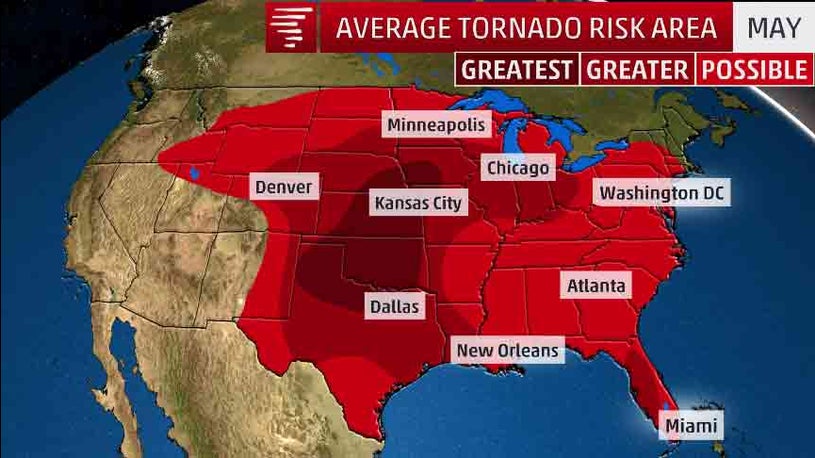When does tornado season start?
Tornado season is a time of heightened concern for residents of tornado-prone regions. It is important to be aware of when tornado season typically occurs in order to be prepared for potential severe weather events. While tornadoes can occur at any time of the year, there are certain months when tornado activity tends to be more prevalent.
Understanding Tornado Season
Tornado season refers to the period of the year when tornado activity is most common. The exact timing of tornado season can vary depending on the geographical location. In the United States, tornado season tends to peak in the spring and early summer months, typically from March to July. This is when warm, moist air from the Gulf of Mexico collides with cooler air masses from the north, creating favorable conditions for tornado formation.
Spring Tornado Season
In many parts of the United States, particularly the central region known as Tornado Alley, tornado season starts in the spring. This is because the clash between warm air from the south and cooler air from the north becomes more pronounced during this time. The increased temperature difference and the presence of strong jet streams in the atmosphere create the ideal conditions for severe weather and tornado formation.
During spring tornado season, states such as Oklahoma, Kansas, Texas, and Nebraska, among others, are at an increased risk of tornadoes. These states are located in the central part of the country where the warm, humid air from the Gulf Coast collides with the dry, cooler air from the Rockies. This clash of air masses sets the stage for the development of severe thunderstorms and tornadoes.
Summer Tornado Season
While tornado activity tends to be highest during the spring, tornado season can extend into the summer months as well. In some regions, such as the Southeastern United States, tornadoes can occur throughout the year due to the influence of different weather patterns. Summer tornadoes often develop in association with tropical systems, such as hurricanes or tropical storms, which bring additional moisture and instability to the atmosphere.
Secondary Tornado Seasons
In addition to the primary tornado season in the spring and early summer, there are secondary tornado seasons that occur in different parts of the country. These secondary seasons typically happen during transitional periods when there are shifts in weather patterns.
For example, in the fall, tornado activity can increase in the Midwest as cold fronts move south and interact with warm air masses remaining from the summer. In some areas, such as Florida, tornadoes can occur more frequently during the winter due to the influence of strong cold fronts moving down from the north.
Frequently Asked Questions
When is the peak of tornado season?
The peak of tornado season varies depending on the region. In Tornado Alley, the peak season is typically in May, although tornadoes can occur throughout the spring and early summer. In other parts of the country, such as the Southeast, the peak of tornado season may occur earlier or later in the year.
How long does tornado season last?
Tornado season can last several months, with the most active period usually lasting from March to July. However, tornadoes can occur at any time of the year, so it is important to remain vigilant and prepared regardless of the season.
What should I do during tornado season?
During tornado season, it is crucial to have a plan in place and be prepared for severe weather. Stay informed about weather conditions by monitoring local news and weather forecasts. Have a designated safe place, such as a basement or an interior room on the lowest level of your home, where you can seek shelter during a tornado warning. Create an emergency kit with essential supplies, including a battery-powered weather radio, food, water, and first aid supplies.
Can tornadoes occur outside of tornado season?
While tornadoes are most common during tornado season, they can occur at any time of the year. There have been instances of tornadoes happening outside of the typical tornado season, so it is important to always be prepared and stay aware of weather conditions.
Final Thoughts
Knowing when tornado season starts is essential for residents of tornado-prone areas. While tornadoes can occur at any time of the year, the peak of tornado season typically falls within the spring and early summer months. However, secondary tornado seasons can occur during transitional periods, and tornadoes can happen outside of the primary tornado season as well. It is important to always stay informed, have a plan, and be prepared for severe weather events. By being proactive and taking necessary precautions, you can ensure the safety of yourself and your loved ones during tornado season and throughout the year.
